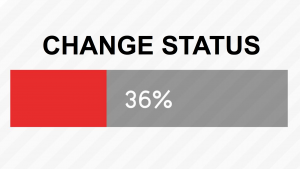
Guest post by Leo Bottary (@leobottary), coauthor of The Power of Peers
There are two fundamental truisms in business and in life: 1)Who we surround ourselves with matters; and, 2) We can help each other in ways that can’t be realized anywhere else. No book, business course, coach or consultant will give you what you can get from a group of peers who share your skill and commitment to excellence.
A 2013 study conducted by the Center for Leadership Development and Research (CLDR) at Stanford Graduate School of Business, Stanford University’s Rock Center for Corporate Governance and The Miles Group, disclosed that nearly two-thirds of CEOs do not receive outside leadership advice. Combine this sobering statistic with the results of the latest Edelman Trust Barometer, which revealed that trust in institutions (government, business, media and non-governmental organizations) remains at an all-time low. Facing a future we can barely imagine, where will we turn? The good news is we have each other.
CEOs, business leaders, and employees alike will turn to their peers to find the kind of help they simply won’t find anywhere else. Fortunately, technological advances have made connecting, networking, optimizing and accelerating (the four ways business leaders typically work with their peers) more convenient than ever before. Understanding the ways we engage one another can help us discern the difference between the peer influence we experience every day and the peer advantage that can result from a more selective, strategic and structured approach.
We connect with our peers in person or online. Online, this often occurs with people we’ve never physically met, yet with whom we regularly exchange information or share a common interest, even if only temporarily. We often trust the prevailing sentiment of our peers more than we trust institutions. We network online, at conferences, or at local business events in a more selective and more purposeful attempt to advance personal and professional interests. Examples would include finding a new job or securing financing for your next business venture. Connecting and networking tend to be individual pursuits and are, by far, the most common ways we reach out to our peers.
Turns out, there’s a big difference between the peer influence most organizational leaders experience when they connect and network, and the peer advantage that can be realized when they optimize and accelerate. We optimize when we work in teams to bring a high level of excellence to achieving a common goal. Leaders often form organizational “tiger teams” to tackle special projects. The Blue Angels (the U.S. Navy’s flight demonstration squadron) conducts debriefs following every (what we see as perfect) flight to talk about how they can do better the next time. Top sports teams participate in practices that are often more rigorous than the games to ensure top performance when it truly counts. The work of optimizing tends to take place among a more homogenous group of peers and be temporary in nature, determined by either the length of a specific project or the span of a season.
We define accelerate as the ultimate means for gaining peer advantage. It’s what top CEOs and business owners do when they work with peers outside their industry sector on an ongoing basis. The objectives are to help one another identify opportunities, meet tough challenges, achieve organizational goals, and grow as leaders. The diversity of the group, coupled with rich dialogue, fosters a safe environment for building trust and addressing complex issues. CEOs in these groups help each other arrive at their own solutions, and they create a culture of accountability to ensure successful implementation of their stated action items. Over time, during this repeated collaborative process, the participants become better listeners and better leaders. (You can’t get that from a book or a consultant!)
While thousands of CEOs and business owners will tell you that being part of a CEO peer advisory group has transformed their lives and their companies, as we’ve learned, too many others don’t avail themselves of this resource. My hope is that more CEOs and business owners will find a group that’s right for them and experience it firsthand.
There’s an African proverb that reads: “If you want to go fast, go alone. If you want to go far, go together.” Timeless advice.
Leo Bottary is Vice President, Peer Advantage for Vistage Worldwide, an adjunct professor for Seton Hall University, and coauthor of The Power of Peers: How The Company You Keep Drives Leadership, Growth, & Success.




There is confusion here. Peer to Peer is the opposite of leadership.
Leaders are part of a hierarchical system of control (do what I tell you and don’t question my judgement) which was discredited when it killed 7 million people in World War 1. It was dismantled in the military in favour of small, peer-to-peer teams of experts who made autonomous decisions.
However, our academic institutions refused to abandon the hook of “you can be top dog and make all the money if you lead a corporation”. The result is a whole generation of business leaders who have universally damaged their companies and corporations through “leadership”. It is no accident that only 12% of Fortune 500 companies in 1955 are still there.
Better communication is exposing these “leaders” as simply kids who won’t share. People are reorganising into fluid, task and skills driven teams – working peer-to-peer without leadership. The companies they create together outperform those with rigid hierarchical “leadership”. And they are more flexible too – their 3D view of their world means they identify more opportunities without the single point of failure which occurs with the leadership model.
Thanks for weighing in. We don’t see seeking advice from peers as the opposite of leadership, so much as a function of it. Two few CEOs are seeking outside leadership advice and gaining the kinds of insights and diversity of perspectives that can come from working with their peers. Peers can help each other in ways they won’t find anywhere else. Because the results are so remarkable for those leaders who engage their peers on an ongoing basis, we feel more CEOs and small business owners should give it a try.